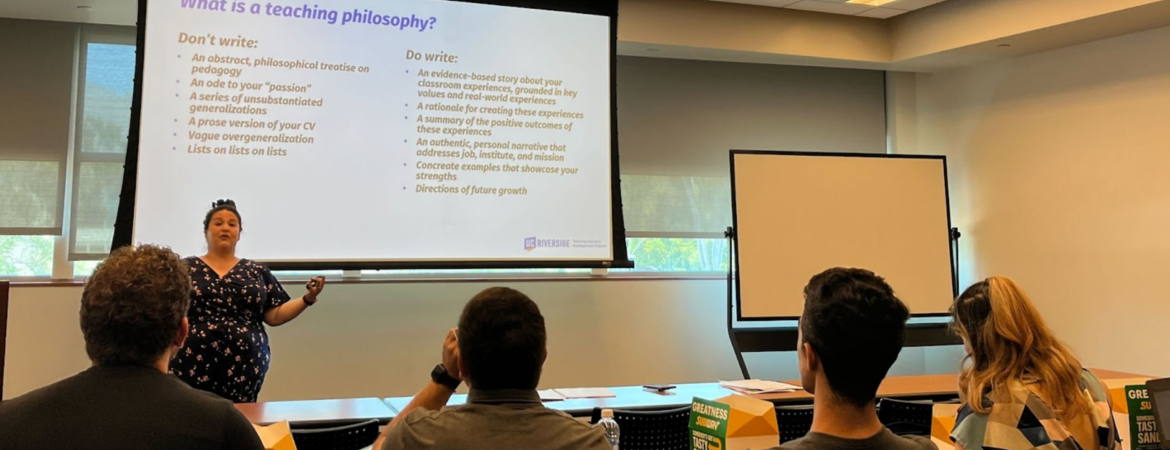Supporting Graduate Students' Academic and Professional Success

This past Career Pathways Week was such a treat!
In May, we hosted a week of talks, panels, workshops, and clinics in collaboration with the Teaching Assistant Development Program and the University Teaching Certificate Program aimed at earning faculty positions at institutions focused on teaching: community colleges, CSUs, and other state college systems, and liberal arts institutions (SLACs). Going into this week, I could not discern Professors of Teaching from other, more traditional faculty positions. Now, I understand them as bonafide faculty positions like any other, although the onus is instead on teaching above all else, whereas research and service come second. In essence, it’s a different balance of the same general principles we, as PhDs, are told to cultivate as we stare down the job market. More than that, I learned that this career trajectory is a growing field and that more positions open up every year, with markedly less competition than research-oriented positions.
First, on Monday, we were privileged enough to spend time with Dr. Brian Sato, an Associate Dean of Teaching and a Molecular Biology and Chemistry Professor at UC Irvine. After a comprehensive keynote lecture about the ever-expanding world of teaching-focused faculty positions, Dr. Sato sat down with students and answered their questions in an intimate networking event. He opened up about the opportunities afforded by the flexibility of teaching careers, his ambitions as an instructor and a researcher, and his observations about the current and future directions of teaching-focused careers. A wealth of Professor of Teaching positions are opening up, and because the post is so new, the workload is still very negotiable.
[Image Description: Dr. Brian Sato from UC Irvine and Dr. Dawn Loyola from GradSuccess hold a casual conversation with UCR grads around a table.]
Tuesday’s Community Colleges and CSUs Faculty Panel reiterated just these points. Our panelists—all UCR alums—work at various local institutions of learning, and they pointed out just how individualized their workloads are. Dr. Wendy Ochoa from San Diego State University remarked that she was still figuring out the demands of the position even a year into it but that it was heavier in research and service than she’d been led to believe. On the other hand, the other two panelists reiterated that these jobs cannot be leveraged by people looking to market themselves primarily as researchers. The course load is no joke, and the applications and interviews are incredibly teaching-focused, culminating in guest lectures. One piece of advice that everyone agreed on: know the student populations at the institution to which you are applying and be able to offer your interviewees concrete, actionable strategies for serving them.
[Image Description: Janine from Abbott Elementary tells her colleague Barb to “create new lives, make those connections!”]
At the helm of our Teaching Assistant Development Program, Dr. Ashley Harlow devoted a workshop and a clinic to writing focused teaching philosophy statements - a cornerstone to any instructor’s application. She used a flow chart method to encourage one guiding philosophy statement, substantiated by three main principles, each supported with specific classroom strategies for enacting them. For more information, check out the asynchronous course on Teaching Philosophy Statements offered by the Graduate Writing Center.
We are often told that the best return on a PhD is a highly-coveted position as a professor at a research institution. But, when it comes down to it, it’s your career. Would you prefer to spend your hours teaching, inspiring, and serving students in your local community? You might want to consider a teaching career, then. You’ll still have room for research and service, but you’ll spend most of the time doing what you love the most. Sounds like a great compromise to me.